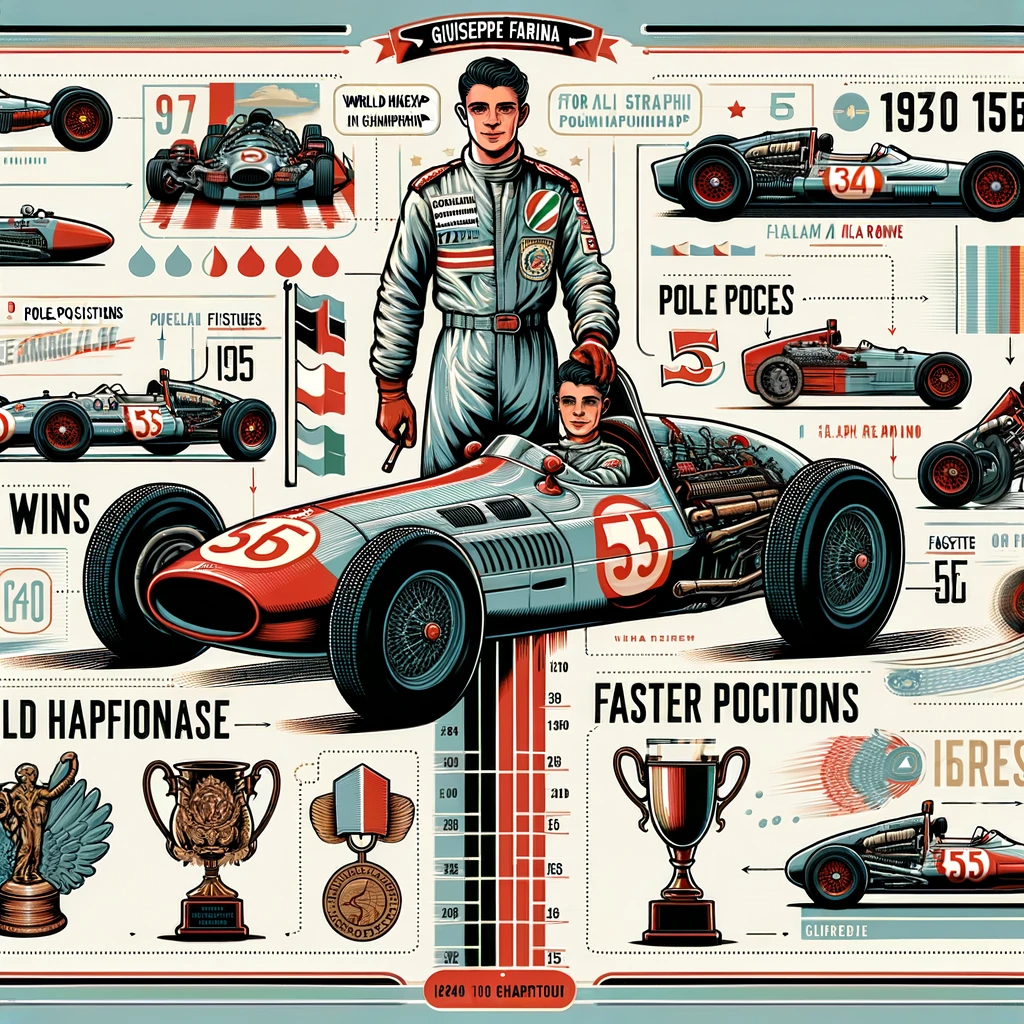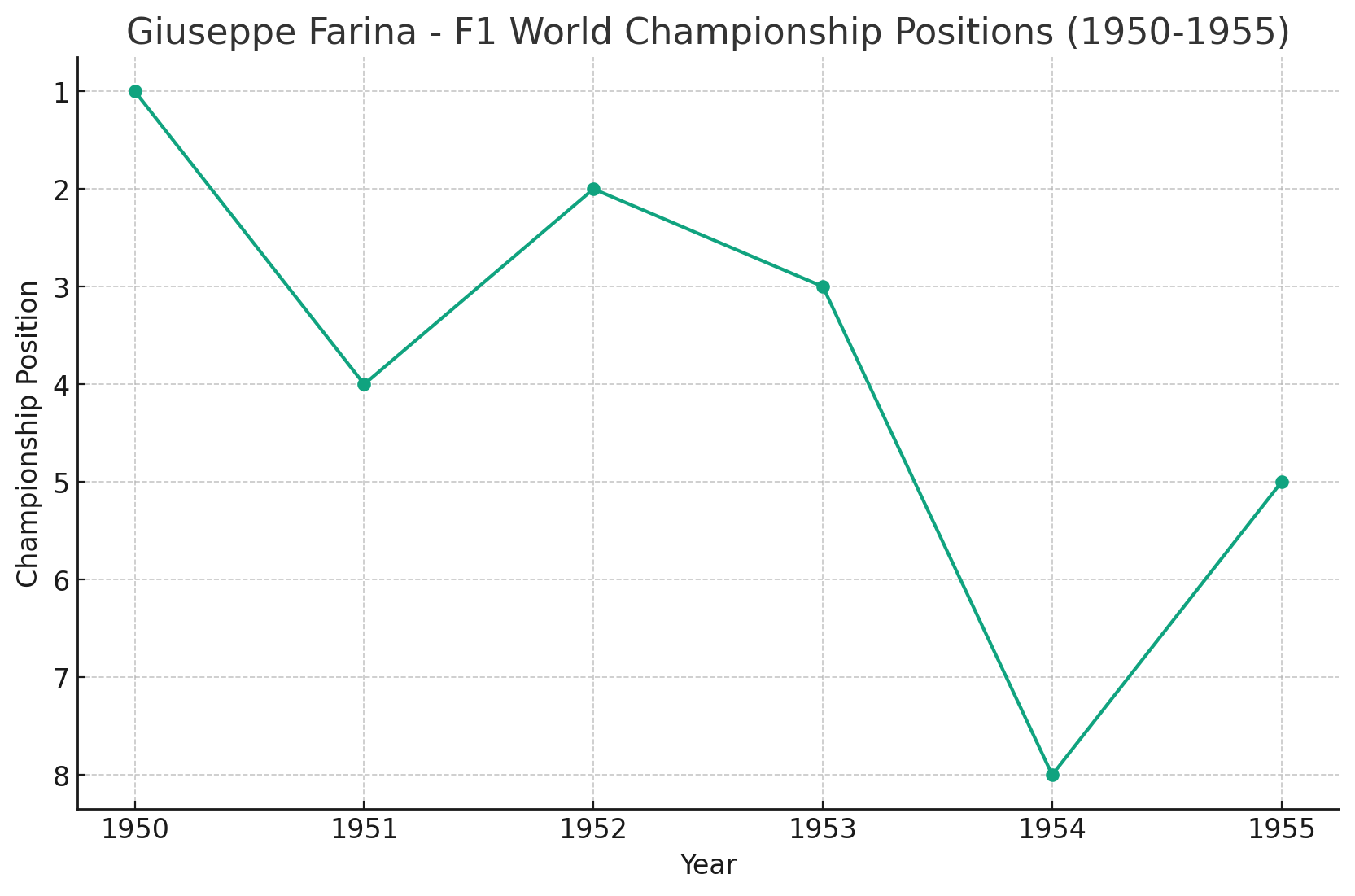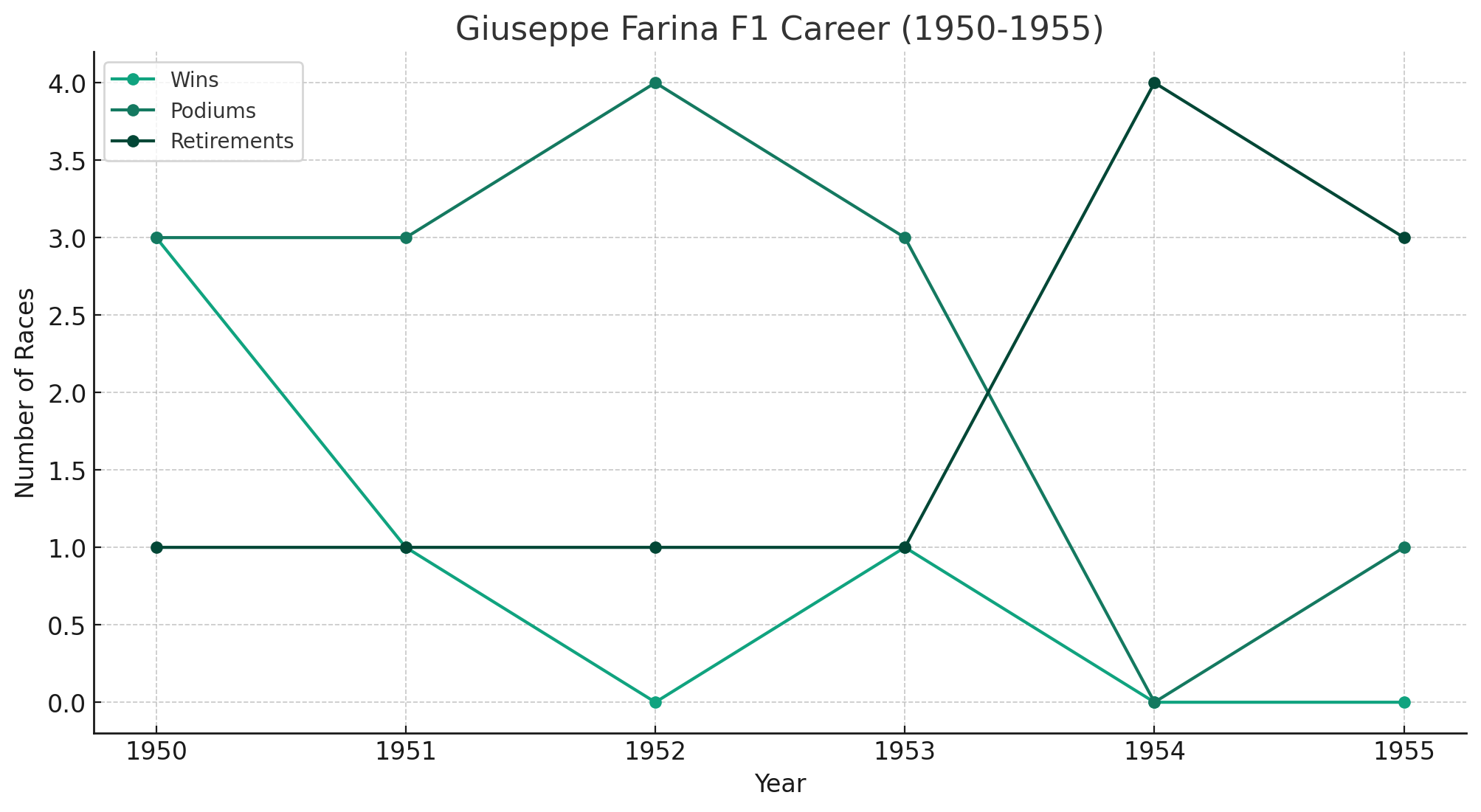Giuseppe Farina
Giuseppe Farina: The First Formula 1 World Champion
A Racing Prodigy from Turin
Giuseppe “Nino” Farina, born in Turin, Italy, on October 30, 1906, was more than just an accomplished racer; he was an icon who etched his name in history as the first-ever Formula 1 World Champion. His journey in motorsports was deeply influenced by his family background, particularly his uncle, the famed car designer Gian-Battista “Pinin” Farina. Farina’s academic achievements were as impressive as his racing credentials; he held a doctorate in law and a degree in economics, earning him the moniker “Il Dottore.”
Early Racing Career and Rise to Prominence
Farina began his racing career in the 1920s, participating in mountain races before transitioning to circuit racing with Maserati in 1934. His move to Enzo Ferrari’s team in 1936 marked a significant leap, with a near-victory at the Mille Miglia, where he finished second, missing the top spot by just 32 seconds. He repeated this second-place finish in 1937 and 1940, learning immensely from the Italian champion Tazio Nuvolari. Farina clinched the Italian title in Formula 1 consecutively from 1937 to 1939, setting the stage for his future success in the post-war racing scene.

Giuseppe Farina: The First Formula 1 World Champion
The Inaugural Formula 1 World Championship
1950 was a landmark year for Farina and the world of motorsports. Driving the Alfa Romeo Tipo 158, Farina won the very first Formula 1 Grand Prix in Britain. However, his involvement in a massive pile-up at the Monaco Grand Prix, which his teammate Juan Manuel Fangio narrowly escaped to win, was a significant setback. Farina redeemed himself by winning the Swiss Grand Prix, overcoming Fangio’s abandonment. The championship duel continued in Belgium and France, with Fangio securing victories. The title was ultimately decided in Italy, where Farina triumphed, becoming the first Formula 1 World Champion.
Subsequent Seasons and Challenges
In 1951, Farina faced stiff competition from Fangio and the emerging Ferrari team, managing to win only in Belgium and finishing fourth in the championship. He joined Ferrari in 1952 but was overshadowed by his teammate Alberto Ascari, despite finishing as the vice-champion. The 1953 season mirrored the previous year, with Ascari dominating and Farina winning his last F1 race at the Nürburgring, placing third in the championship.
Career Twilight and Tragic Demise
Farina’s career was marred by a severe accident in 1954, which caused lasting pain and discomfort. He made a brief comeback in 1955 but soon realized the physical toll of racing was too much to bear. After an attempt to race in the 1956 Indianapolis 500, Farina retired from professional racing. Tragically, on June 30, 1966, while en route to the French Grand Prix in Reims, Farina lost control of his Ford Cortina and crashed fatally, marking the end of a legendary chapter in motorsport history.

Giuseppe Farina: The First Formula 1 World Champion
Career Stats of Giuseppe Farina
- World Championships: 1 (1950)
- Total Grand Prix: 33 (37 involvements)
- Wins: 5 (15.15%)
- Pole Positions: 5 (15.15%)
- Fastest Laps: 5 (15.15%)
- Podiums: 20 (60.61%)
- Retirements: 10 (30.30%)
- Non-World Championship Races: 65
- Total Points: 127.33
- Points Per Grand Prix: 3.86
- Average Points Per Season: 21.22
- Total Laps Led: 336
- Kilometers Led: 2,651
- Total Laps Raced: 1,823
- Total Kilometers Raced: 12,331
- Average Starting Grid Position: 3.12
- Average Finishing Position: 2.81
Farina’s legacy in Formula 1 is not just about his achievements on the track but also about his pioneering role in a sport that was in its nascent stage. His combination of academic intelligence, racing skill, and a fearless approach to driving set him apart as a true legend of Formula 1.

Giuseppe Farina: The First Formula 1 World Champion




